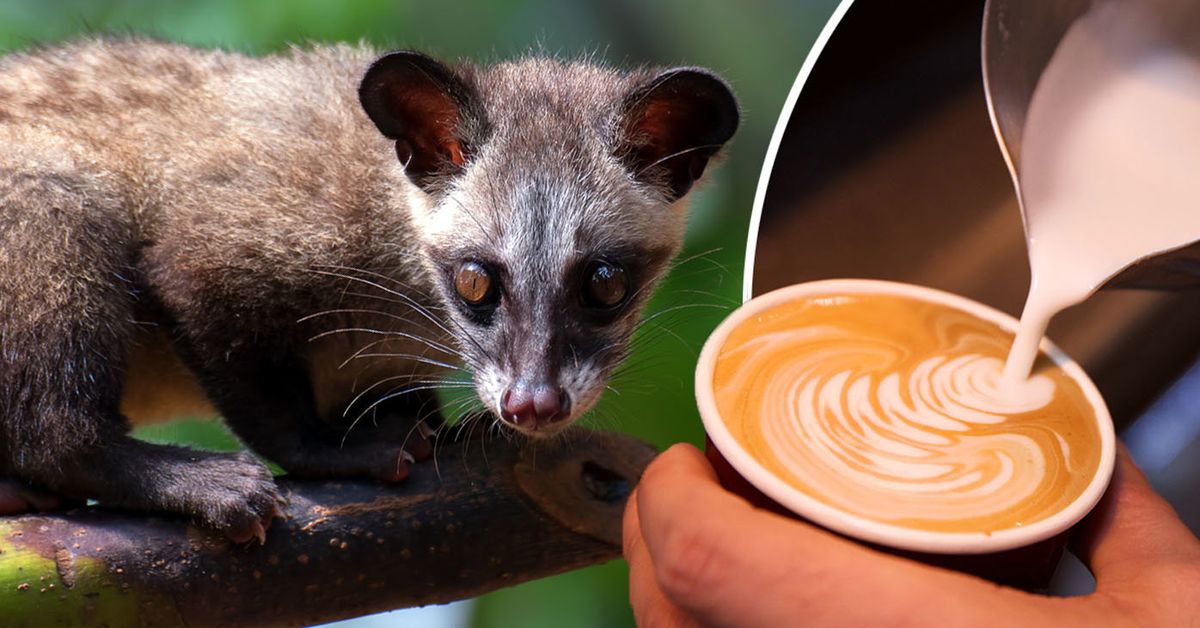Civet coffee is the most expensive coffee in the world and now scientists might have figured out why people are willing to pay more than $1540 ($US1000) per kilo of it.
Even though it’s made from animal poo.
Also known as kopi luwak, the rare and pricey coffee is made from beans harvested from the faeces of the Asian palm civet.
 Palm civets are native to the South and Southeast Asia and responsible for the world’s most expensive coffee. (Getty Images/iStockphoto)
Palm civets are native to the South and Southeast Asia and responsible for the world’s most expensive coffee. (Getty Images/iStockphoto)
These furry critters are native to South and Southeast Asia, including countries like Thailand, Vietnam and Indonesia.
They eat ripe coffee berries, digest the pulp and poop out the beans, which are then harvested and sold as civet coffee.
It has been around for more than a century and is usually so expensive because of the labour-intensive harvesting process, which often involves farmers hunting through forests for beans civets have pooped out.
The beans are usually found in small clusters, so it takes a long time to harvest a single kilo, and need to be laboriously cleaned before they can be roasted.
 Faeces of the Asian common palm civet, photographed before collection by the researchers. (Ramit Mitra)
Faeces of the Asian common palm civet, photographed before collection by the researchers. (Ramit Mitra)
But many coffee afficionados claim civet coffee is worth the cost because of its unique flavour profile.
Now scientists have revealed they might be on to something.
Indian researchers discovered that civet coffee beans had higher levels of fats and other key flavour-enhancing compounds than traditionally harvested beans.
That could be why civet coffee has its unique taste and is so pricey.
The researchers analysed coffee beans collected from the faecal matter of wild civets on five robusta coffee estates in India, then compared them to the beans harvested from ripe coffee berries on each estate.
 In bloom Robusta coffee flowers and ripe Robusta coffee berries on one of the studied estates. (Ramit Mitra)
In bloom Robusta coffee flowers and ripe Robusta coffee berries on one of the studied estates. (Ramit Mitra)
They discovered that civet coffee beans had a higher total fat content, which would affect the coffee’s aroma and taste profile.
They also had higher levels of two fatty acid methyl esters (FAMEs) than the other beans, which may add a dairy-like flavour to the coffee.
According to the research, the chemical differences between the civet coffee and the traditionally harvested beans comes down to the animals’ digestive systems.
Civet coffee beans undergo fermentation while being digested, causing chemical changes that likely affect the coffee’s final flavour.
 Luwak (civet cat) eating coffee bean : Luwak Coffee is the world most expensive coffee (Getty)
Luwak (civet cat) eating coffee bean : Luwak Coffee is the world most expensive coffee (Getty)
However, these findings are based on unroasted beans and the researchers said the roasting process can alter the beans’ chemical composition.
They also only analysed robusta beans, but most civet coffee is produced using arabica beans, so there may be differences between the two.

